Food webs
The extent to which Good Environmental Status has been achieved
Marine Food Webs (D4) is a compound Descriptor and reflects on the status assessments of other descriptors such as those presented in D1, D3 and D6. Overall food webs have not achieved Good Environmental Status (GES) across the marine strategy area. We have reached this conclusion as:
-
Demersal fish communities (species typically feeding or living on or near the seabed) have not achieved GES either in the Greater North Sea or Celtic Seas.
-
Plankton community indicators show decreasing productivity trends in the Greater North Sea and Celtic Sea.
-
Changes in fish feeding guild biomass are mixed across the Greater North Sea and Celtic Seas
-
-
There are spatially extensive increases in benthivores in both regions
-
-
-
There are increases in the biomass of piscivores and pisco-crustivore biomass in the southern North Sea and across large areas of the Celtic Seas
-
-
-
There are decreases in the biomass of planktivores, pisco-crustivores and piscivores in the northern North Sea
-

European lobster (Homarus gammarus) eating blue mussels (Mytilus edulis). Photo credit Angela Gall.
Progress since previous assessments
In 2019, it was unclear whether GES had been achieved, either for fish communities or for the food web, although it was thought that fish communities were recovering.
Since then, our understanding of food web dynamics has improved to the extent that we are able to ascertain with medium confidence that demersal fish communities are not in good status, either in the Greater North Sea or Celtic Seas. Although evaluation of trends is made more difficult by the relative lack of knowledge in the past, and there is a degree of uncertainty, it is likely that the food web status is continuing to decline despite improvements in the status of some fish stocks.
Other trends observed in 2019 are continuing; grey seal numbers continue to increase, though harbour seals are doing relatively less well, breeding seabird populations are still not recovering, and plankton communities are continuing to evolve, though the pattern is complex with a suggestion of decreasing productivity overall.
How progress has been assessed
Assessment overview
The determination of the status of food webs has been based on six and seven indicators for the Greater North and Celtic Seas, respectively. These indicators have been developed to create an overall perspective on the food web.
The GES status for food webs is assessed by integrating the outcome of the indicators shown in Table 1 but also considers the GES assessments described in the marine ecosystem descriptors for ‘D1’ and ‘D4’ on fish, birds, seals, cetaceans and pelagic habitats. This enables the food web thematic assessment to consider the abundances, distribution and productivity of key groups representing different trophic levels.
Table 1. sets out the criteria and their associated targets and relevant indicators used to assess progress toward GES for D4 Food Webs. For each, we set out whether it has been met, not met or been partially met across both UK sub regions. We have also linked to the corresponding Convention for the Protection of the Marine Environment of the North-East Atlantic (OSPAR) Quality Status Report (QSR) 2023 Common Indicators.
Table 1. Summary overview of the status assessment for all Food Webs (D4) assessments.
|
Criteria 1 |
Trophic guild diversity |
|
2019 Target |
The species composition and relative abundance of representative feeding guilds are indicative of a healthy marine food web. |
|
Corresponding OSPAR QSR 2023 Common Indicator |
Pilot Assessment of Feeding Guilds |
|
Greater North Sea |
Not met |
|
Celtic Seas |
Not met |
|
Criteria 2 |
Trophic guild balance |
|
2019 Target |
The balance of abundance between representative feeding guilds is indicative of a healthy food web. |
|
Corresponding OSPAR QSR 2023 Common Indicator |
Pilot Assessment of Ecological Network Analysis Indices |
|
Greater North Sea |
Uncertain |
|
Celtic Seas |
Not used |
|
Criteria 3 |
Size distribution |
|
2019 Target |
The size structure of fish communities is indicative of a healthy marine food web. |
|
Corresponding OSPAR QSR 2023 Common Indicator |
Size Composition in Fish Communities |
|
Greater North Sea |
Not met |
|
Celtic Seas |
Not met |
|
Corresponding OSPAR QSR 2023 Common Indicator |
Pilot Assessment of Mean Maximum Length of Fish |
|
Greater North Sea |
Not met |
|
Celtic Seas |
Not met |
|
Corresponding OSPAR QSR 2023 Common Indicator |
Proportion of Large Fish - Large Fish Index |
|
Greater North Sea |
Not met |
|
Celtic Seas |
Not met |
|
Criteria 4 |
Productivity |
|
2019 Target |
The productivity of each of the representative feeding guilds, characterised by key species, is indicative of a healthy marine food web. |
|
Corresponding OSPAR QSR 2023 Common Indicator |
Concentrations of Chlorophyll-a |
|
Greater North Sea |
Not met |
|
Celtic Seas |
Not met |
|
Corresponding OSPAR QSR 2023 Common Indicator |
Changes in Phytoplankton and Zooplankton Communities |
|
Greater North Sea |
Not met |
|
Celtic Seas |
Not met |
Detailed assessments
The indicators for demersal fish communities (FC2, FC3, FW3) have not achieved the threshold indicating good status, in both the Greater North Sea and Celtic Seas which suggests that this component of the food web is under pressure across all UK waters.
The Phytoplankton and Zooplankton Communities indicator (PH1/FW5) shows a decreasing trend of primary production across both the Greater North Sea and Celtic Seas and a mixed picture for various plankton lifeforms, with some showing increasing trends and others decreasing.
The fish feeding guild indicator (FW7) reveals a mixed picture of change within and across guilds between 1997-2020. There were decreases in the biomass of planktivores, pisco-crustivores and piscivores in the northern North Sea but increases in the biomass of benthivores, pisco-crustivores and piscivores in the southern North Sea. In UK Celtic Seas, the biomass of all feeding guilds either increased or remained unchanged over most subdivisional areas assessed.
Different trends were observed in Ecological Network Analysis-related indices (FW9), resulting in uncertain status for the trophic network in the Greater North Sea.
Achievement of targets and indicators used to assess progress in 2024
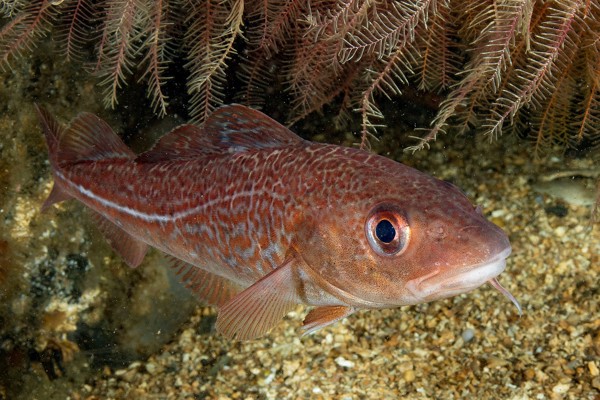
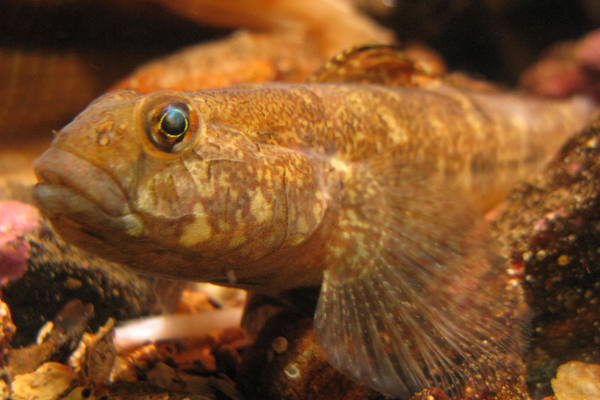
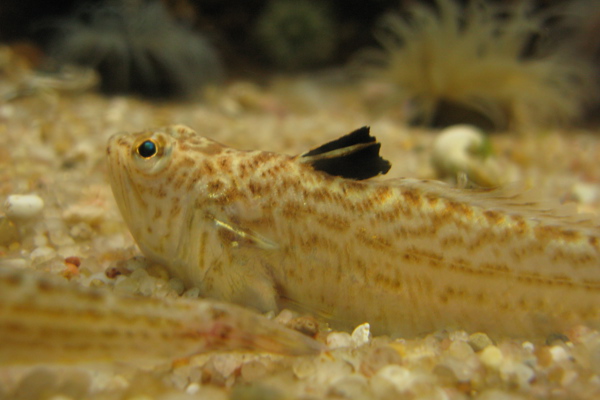
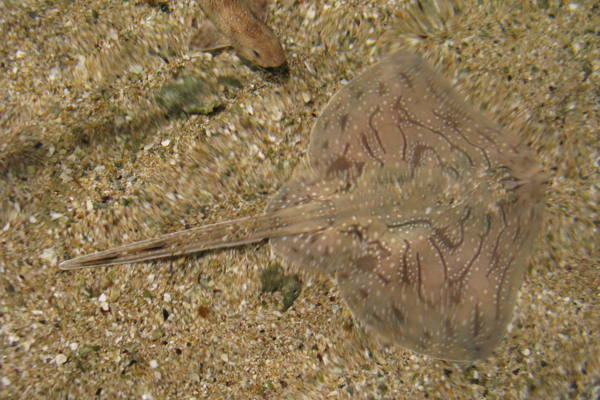
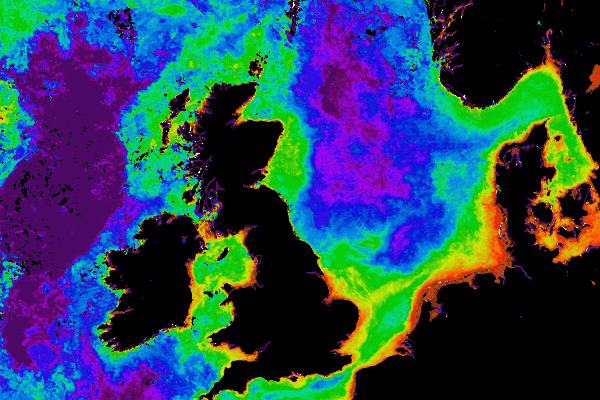

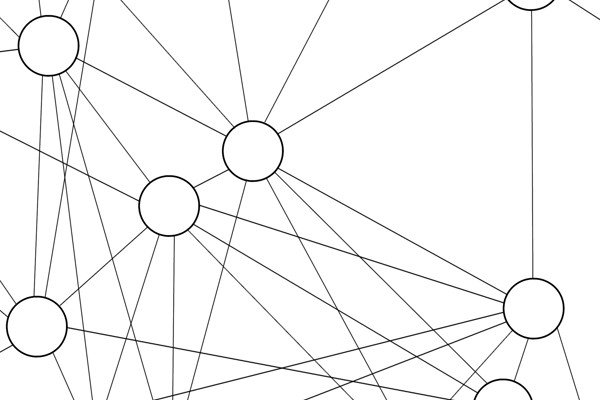
Drivers, activities and pressures affecting the state of the marine environment
Climate change is driving range-shifts of food web components and their interactions, and rising sea levels will require more flood defence infrastructure that potentially alters the habitat of the coastal zone. The ongoing reduction in sulphate emissions (including from cleaner ship fuels) will result in higher near surface temperatures and may result in more marine heatwaves with short-term stresses for the food web.
Increased need for seafood may lead to more intense harvesting and/or competition with aquaculture. Fishing also preferentially targets larger individuals and, over time, a sustained increase in the mortality of a population will lead to a reduction in the proportion of large individuals in the ecosystem and changes to predator - prey interactions. Fishing can also remove important forage fish for a range of species (Figure 1).

Figure 1. Sandeels (many species including Ammodytes tobianus) are an important source of food for Atlantic Puffins (Fratercula arctica). Photo credit Allan Drewitt.
Impact of pressure on ecosystem services
Climate change acts on all aspects of the food web. Increasing temperatures raise the metabolic demands on all organisms, whilst declining levels of dissolved oxygen are likely to impact productivity. Marine heatwaves may result in sudden restructuring of food webs allowing colonisation by invasive species with potentially large adverse economic consequences. Ocean acidification may make it harder to secrete calcium and damage shellfish populations and reef structures. Fishing impacts the upper part of the food web, and distorts energy flows relative to pristine systems.
Degraded food webs undermine provision of ecosystem services in the following ways:
-
Increased risk of harmful invasive species with associated large costs of management.
-
Threats to commercial fisheries to meet societal needs for economic, social, employment and reduced potential from aquaculture.
-
Reduced ability to sequestrate carbon, leading to further climate change and increased costs of adaptation.
-
Loss of ecotourism revenue associated with charismatic species.
Impacts of climate change on pressures and state
Climate change is expected to affect primary production rates, and species composition of phyto- and zooplankton, which may trigger potential changes in trophic interactions. Examples include change in the distribution of species richness across food webs as reported by Thompson and others. (2023), and the balance between demersal and pelagic food web components and relative productivity as seen in Thorpe and others. (2022). It is unclear whether food webs will become either more or less productive, but if the latter, trophic pathways may shorten, and birds and mammals be at increased risk. Climate change will also reduce the amount of dissolved oxygen in the water column, and make the ocean less alkaline, potentially reducing the population of shellfish. Several recent studies come to contrasting conclusions concerning expected changes in primary productivity in the North Sea. The observational study of Capuzzo and others. (2018) suggests that productivity has recently declined, consistent with the expectations of Lotze and others. (2019), but in contrast with the study of Thorpe and others. (2023) which predicts increased primary productivity caused by greater summer stratification. Spence and others. (2022) show that models currently have low skill at representing primary productivity. Further research on key bottom-up processes is needed in the light of conflicting predictions about the impact of climate change on productivity.
In the Celtic Seas, changes before 2016 have been driven mostly by fisheries rather than climate change, but in the future, warming is increasingly likely to drive changes in the food web (Hernvann and others., 2020).
Management actions taken
The actions we are taking to achieve GES for Food Webs are set out in the UK Marine Strategy Part 3 2025: Programme of Measures.
Whilst mitigation of climate change requires global co-operation and is not the responsibility of the UK alone, little progress has been made, and atmospheric CO2 levels are at their highest for over 2 million years. The world is currently not on track to meet its 2015 Paris Agreement target to limit global warming to much less than 2ºC above pre-industrial levels. Global temperatures in 2024 were the warmest on record, and the current global mean temperature is already more than 1.5ºC above pre-industrial baselines.
Every five years, the government produces an assessment of the risks and opportunities from climate change and reports on how we will adapt in The National Adaptation Programme (NAP). This approach to climate adaptation is world leading, placing the UK at the forefront of global efforts to manage climate risk. NAP3 explains the government’s plans to adapt to climate change from 2023 to 2028.
The Climate Change Act and the Climate Change (Scotland) Act require Northern Ireland, Wales, and Scotland to have their own plans for climate adaptation. These plans are closely aligned, and Northern Ireland, Wales, and Scotland have contributed to NAP3.
Next steps
Evidence challenges
Marine Food Webs (D4) is a compound Descriptor. The challenges facing all relevant biodiversity descriptors are therefore also relevant here. Specific challenges for Marine Food Webs will be to:
-
Continue to develop ecosystem modelling approaches which will allow us to explore different scenarios addressing impacts of fishing and climate change on marine food webs.
-
Explore changes in food web indicators due to climate change impacts within the Intergovernmental Panel on Climate Change (IPCC) scenarios. To capture the impacts of human activities and climate change on food webs, in terms of changes in trophic and non-trophic interactions, and the supply of ecosystem services there is a need to develop integration methods and cumulative effects assessments further (e.g. Piet and others., 2023). As an example, further development of ecosystem modelling approaches will allow the exploration of different scenarios addressing impacts of fishing and climate change on food webs (Thorpe and others., 2022; Spence and others., 2022).
Operational objectives
In addition to measures already in place, the main new measures to address the targets for food webs have been outlined elsewhere in this document, particularly under the biodiversity, commercial fisheries, and eutrophication descriptor sections. To understand further how we need to progress toward GES for marine food webs we will:
-
Continue ongoing development of UK food web indicators and will work with other countries in OSPAR to:
-
-
develop and test regional assessment methods that can also be used for assessing the status of food webs and:
-
-
-
establish the feasibility of setting threshold values for the UK targets
-
Technical Detail: Good Environmental Status for the next cycle
Table 2. shows the overarching targets (characteristics) for GES, along with their criteria, individual GES targets and associated indicators for the next assessment cycle (subject to change following the UK Marine Strategy Part 1 public consultation).
Table 2. GES criteria and targets for next assessment cycle.
|
Overarching target |
||||||||
|
The health of the marine food web is not significantly adversely affected by human activities. |
||||||||
|
Criteria |
2024-2030 GES targets |
Comment |
Indicators to be used |
|||||
|
Trophic guild diversity |
The species composition and relative abundance of representative feeding guilds are indicative of a healthy marine food web. |
No change |
|
|||||
|
Trophic guild balance |
The balance of abundance between representative feeding guilds is indicative of a healthy food web. |
No change |
|
|||||
|
Size distribution |
The size structure of fish communities is indicative of a healthy marine food web. |
No change |
|
|||||
|
Productivity |
Productivity of each of the representative feeding guilds, characterised by key species, is indicative of a healthy marine food web. |
No change |
|
|||||
References
Capuzzo, E., Lynam, C. P., Barry, J., Stephens, D., Forster, R. M., Greenwood, N., McQuatters-Gollop, A., Silva, T., van Leeuwan, S. M. & and Engelhard, G. H. (2018). A decline in primary production in the North Sea over 25 years, associated with reductions in zooplankton abundance and fish stock recruitment. Global change biology, 24(1), e352-e364.
Hernvann, P.-Y., Gascuel, D., Grauss, A., Druon, J.-N., Kopp, D., Perez, I., Piroddi, C., Robert, M. (2020). The Celtic Sea Through Time and Space; Ecosystem Modelling to Unravel Fishing and Climate Change Impacts on Food-web Structure and Dynamics, Frontiers in Marine Science, https://doi.org/10.3389/fmars.2020.57817
Lotze H.K., Tittensor D.P. and others. (2019). Global ensemble projections reveal trophic amplification of ocean biomass declines with climate change, Proc Natl Acad Sci USA, 116(26), 12907-12912. DOI: 10.1073/pnas.1900194116.
Piet, G, Bentley, J, Jongbloed, R, Grundlehner, Tamis, J, de Vries, P. (2023). A Cumulative Impact assessment on the North Sea Capacity to Supply Ecosystem Services, https://papers.ssrn.com/sol3/papers.cfm?abstract_id=4450241
Spence, M.A., Lynam, C.P., Thorpe, R.B., Heneghan, R.F. and Dolder, P.J. (2022) Synthesizing Empirical and Modelling Studies to Predict Past and Future Primary Production in the North Sea. Frontiers in Marine Science 9:828623. https://doi.org/10.3389/fmars.2022.828623
Thompson, M. S. A., Couce, E., Schratzberger, M., & Lynam, C. P. (2023). Climate change affects the distribution of diversity across marine food webs. Global Change Biology, 29, 6606–6619. https://doi.org/10.1111/gcb.16881
Thorpe, R.B., Arroyo, N.L., Safi, G., Niquil, N., Preciado, I., Heath, M., Pace, M.C. and Lynam, C.P. (2022) The Response of North Sea Ecosystem Functional Groups to Warming and Changes in Fishing. Frontiers in Marine Science 9:841909. https://doi.org/10.3389/fmars.2022.841909
Thorpe, R.B., Heath, M., Lynam, C.P. (2023). Can we use recovery timescales to define Good Environmental Status? Ecological Indicators, 155, 110984. https://www.sciencedirect.com/science/article/pii/S1470160X23011263
Contributors
Robert Thorpe
Acknowledgements: Murray Thompson, Christopher Lynam
